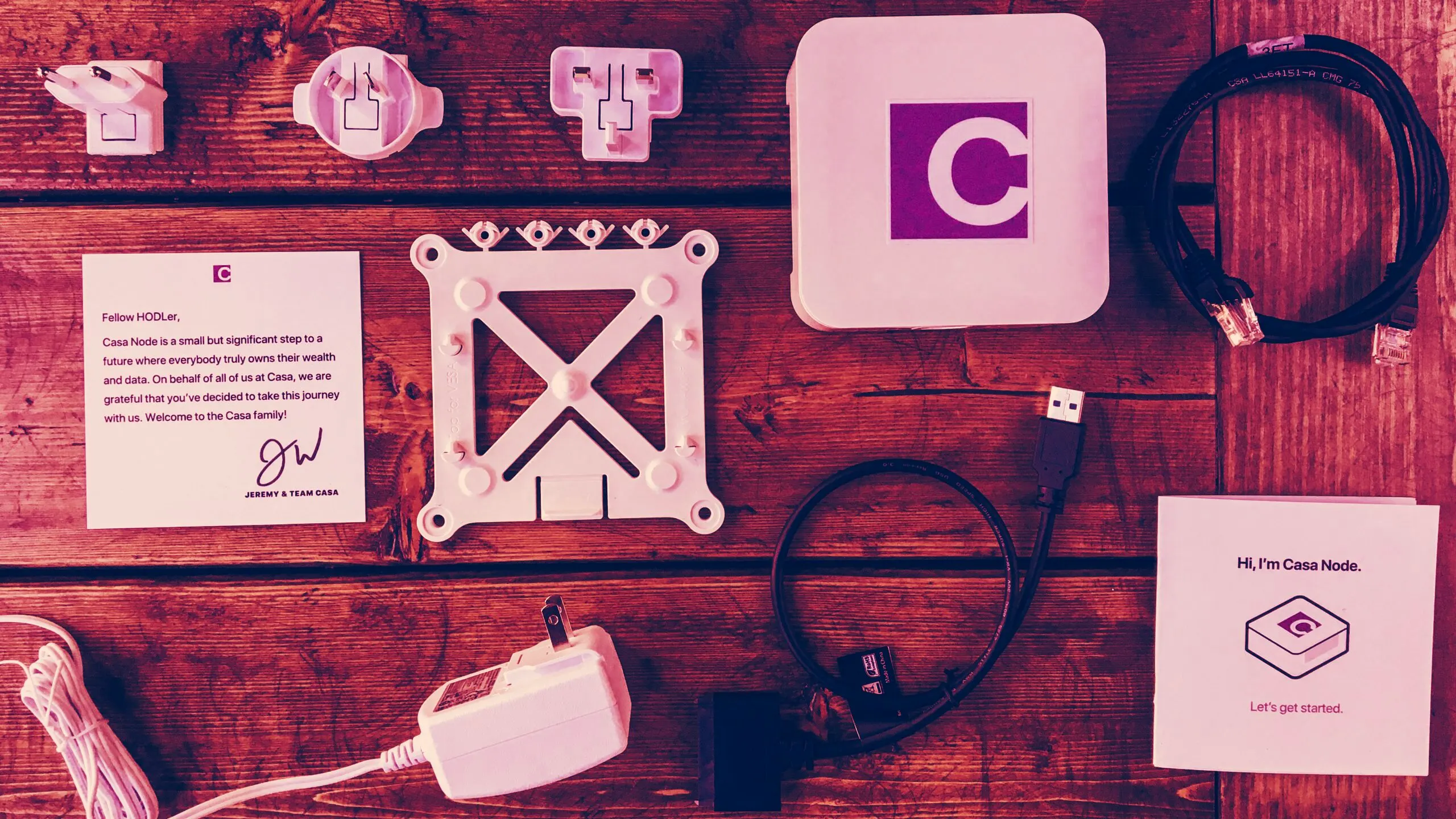In brief
- Casa has released step-by-step instructions for building a Bitcoin node.
- The DIY project requires about $250-300 of components.
- Casa recently stopped building nodes to focus on its Keymaster software.
Earlier this year, Casa announced that it would no longer build its own Bitcoin hardware nodes so that it could fully focus on its Keymaster Bitcoin multisig solution.
Still want a Casa Node? Build one yourself. As a potentially perfect DIY project for any tech-savvy crypto enthusiast cooped up at home amidst the coronavirus (COVID-19) pandemic, Casa has released comprehensive instructions for building your own node.
With a Casa Node, you’ll be able to run a full Bitcoin and Lightning node with an interface designed to be user-friendly. Getting there looks to be a fairly lengthy process, but Casa’s tutorial is robust and full of videos and diagrams, hopefully taking any confusion and aimless experimentation out of the process.
You’ll need a USB keyboard, a monitor with HDMI input, a router, and a small/mini/precision Phillips head screwdriver handy. Assembling the inside of the node requires a Raspberry Pi 4 computer, fan shim, microSD card, microSD USB adapter, Ethernet cable, and MicroHDMI adapter.
When it comes to cases, you have a couple of options: a Geekworm case or a Casa-branded case from CryptoCloaks. Each needs a power adapter and a SSD drive, as specified in the instructions, while the former case also requires a hard drive expansion board.
Casa pegs the total cost of components at between $250-300 depending on selected options, although you may need to hunt around for a couple of them: Some of Casa’s provided Amazon links point to sold-out products, perhaps due to these newly shared instructions.
If you’ve ever wanted to run your own Bitcoin node, this could be an ideal way to get started. And even if you haven’t, this might be a compelling way to make the most of our current social-distancing predicament and maybe learn something new in the process.

